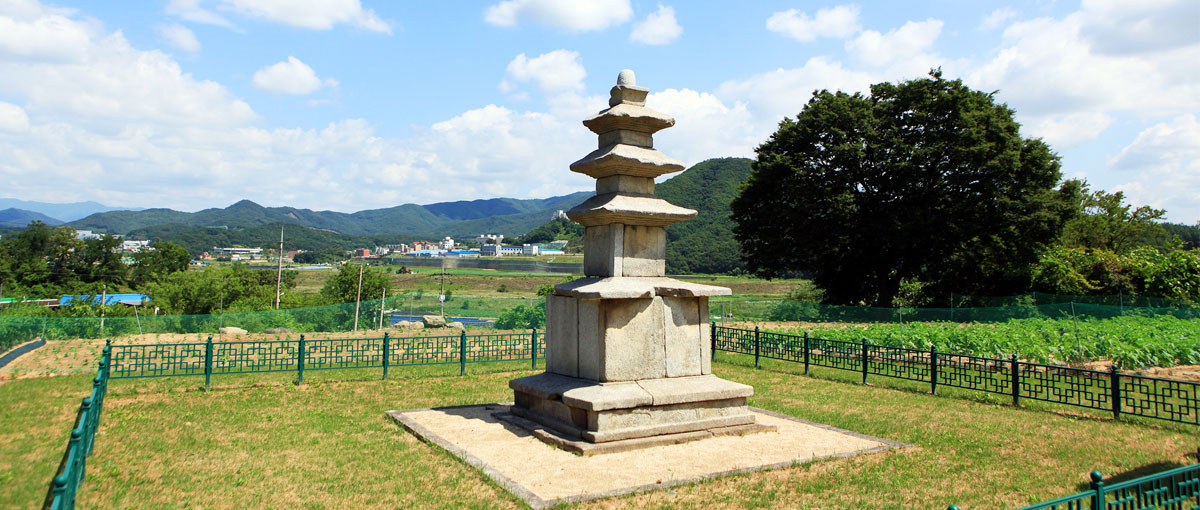Three-story Stone Pagoda at Heungbeopsa Temple Site (Treasure No. 464)

(Treasure no.464)
Three-story Stone Pagoda
at Heungbeopsa Temple Site
Detail
- Classification : Structure/ religious faith/ Buddhism/ pagoda
- Unit/ extent : 1 unit
- Designation/ registration date : July 5, 1968
- Location : 517-2 beonji, Anchang-ri, Jijeong-myeon, Wonju-si
- Period : Goryeo era
- Owner (ownership group) : state-owned
- Manager (management group) : Wonju City
It is a pagoda of the Goryeo Dynasty, found in the middle of a field known as the Heungbeopsa Temple Site. Heungbeopsa Temple was a huge Buddhist temple that lasted from the Silla era to the Goryeo era. In addition to this pagoda, the Stupa for Yeomgeohwasang (National Treasure No. 104) and the Stele for Great Preceptor Jingong and Stone Chest (Treasure No .365) were also found here, the Heungbeopsa Temple Site, but the two were forcibly removed from Korea by Japanese imperialists, and are now housed in the National Museum of Korea.
This pagoda has a dual stylobate, and a main structure that looks like a tiled-roof house is stacked in 3 stories on top of it. On each side of the lower stylobate, three elephant eye patterns are engraved upwards like blooming flowers, illustrating the characteristics of the typical Goryeo style. The surface of the upper stylobate is inclined and a support for fixing the lowest body stone is carved in three layers in the center. The main structure, in which the Buddha's sariras or scriptures are enshrined, is relatively small compared to the size of the stylobate. A pillar pattern is engraved on each corner of each body stone and a square door pattern is found on the lowest body stone, with a heavily worn doorknob pattern inside it. The cover stone is thick and has a steep slope. Its lower support has four thin layers, most of which is broken. The eaves of the cover stone are well-leveled overall out but slightly lifted up at both sides, which is a feature of stone pagodas of the Goryeo Dynasty. The top of the pagoda is severely damaged and only the noban (roof-shaped ornaments) to support the uppermost ornaments remains, but in a heavily damaged state as well.
This pagoda is characterized by the imbalance of its stylobate and its main structure and is dated in the early Goryeo era given the simple stone composition and carving technique.